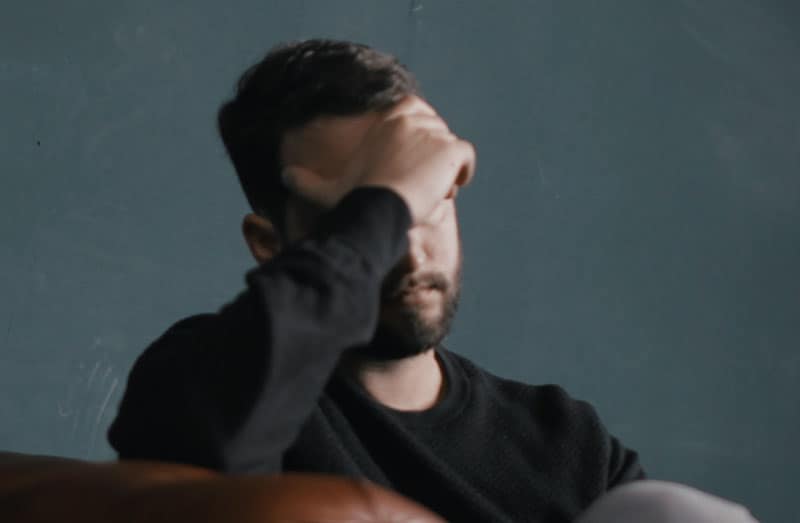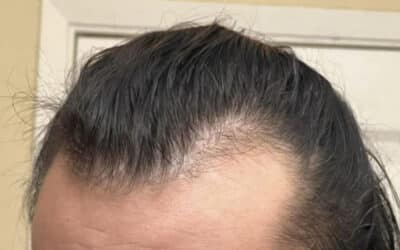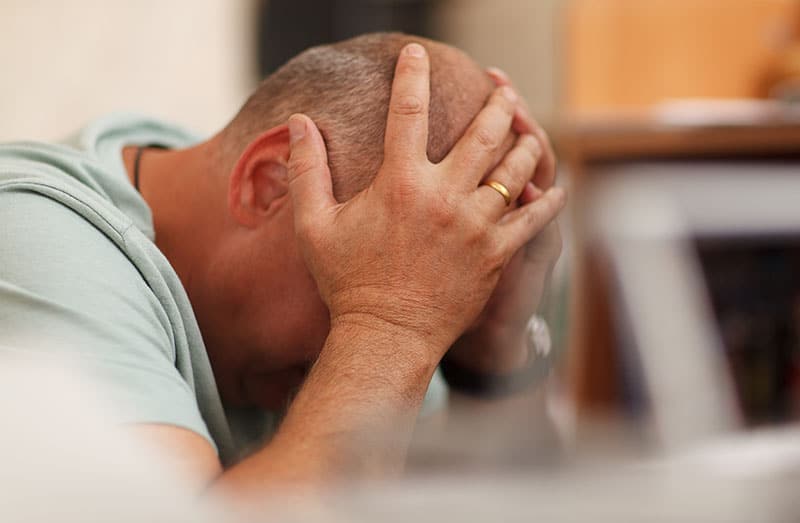Understanding the root cause of hair loss is the most important thing you can do to resolve your struggles with hair loss. The root causes of hair loss vary depending on the person, their constitution, and their environment. There are many different factors that can contribute to a person experiencing hair loss. Sometimes multiple factors overlap. Understanding how to determine the cause of your thinning hair is the best way to get to the root of the problem and restore your hair.
The Root Cause of Hair Loss
In order to understand the root cause of hair loss, it helps to understand what a healthy hair growth cycle looks like. The longest phase is the hair’s active growth phase, also known as the anagen phase, which lasts for about 3 years. At any one time, about 90% of your hair follicles are in the anagen phase. Healthy hair will grow an average of about 1cm per month.
The anagen phase is followed by the shortest phase of all, also known as the catagen phase where the hair is still alive but no longer growing. About 1% of hair is living in this phase. Finally we have the telogen phase also known as the resting phase. During this phase, the hair follicle is completely inactive. In other words, the hair is dead. About 9% of hair is in this phase, and when the hair falls out you will see a white bulb at the end of the shaft. As this hair falls out, new growth is emerging from the root and a new anagen phase has begun.
It is totally normal and natural to shed anywhere from 50 to 100 hairs per day. When a person experiences hair loss, this balance of shedding and regrowth skews. If you notice a significant increase in shedding, see more shed hair in your comb, shower drain, or around the house, it is a good idea to schedule an appointment with a healthcare practitioner you trust to get to the root of the issue. Many other factors lead to hair loss. We’ll explore these below.
Age/Genetics & Hair Loss
To some extent thinning hair is a natural part of the aging process. As we age our hair follicles start to shrink and produce shorter, thinner hair. The hair will increasingly turn grey and while as melanin production slows. The sebaceous glands produce less of the naturals oils that keep the hair silky smooth, meaning the texture may change, or the hair may be more prone to breakage. The extent of how severe one’s hair loss will be is largely determined by genetic factors. However, other factors will cause hair loss as well.
Some people experience genetically inherited pattern hair loss, also known as androgenic alopecia as early as the onset of puberty. Others won’t experience it until later in life. Androgenic alopecia is a polygenic condition, meaning that there is not one single gene that causes pattern baldness. Also, contrary to popular myth, hair loss genes can be passed down to either parent. The roots of your mother’s family tree are not solely to blame.
Hormone Imbalances
Androgenic alopecia is a hormone imbalance as well. The body produces an overabundance of male sex hormones such as testosterone with influence the formation of DHT in the hair follicle, also known as the root of the hair. When this happens the follicle begins to shrink, as described above. Over time the follicles stop producing altogether. The roots of the hair essentially wither and die.
Pattern hair loss expresses itself differently in men and women. In men, it presents as a receding hairline that begins at the temples and progresses to the top of the head. As a result, you’ll notice an M-shaped hairline. There is a correlation between male pattern baldness and certain serious illnesses including prostate cancer, diabetes, obesity, cardiovascular disease, and high blood pressure. If you are experiencing male pattern baldness it is a good idea to be checking in regularly with your doctor for preventative checkups so you can monitor for any early signs of illness.
For women with pattern baldness, the thinning hair tends to happen in a diffuse pattern throughout the scalp. There are some links between female pattern baldness and polycystic ovary syndrome, a type of hormone imbalance. Women with PCOS may also experience symptoms such as acne, irregular periods, hirsutism (excess hair growth on the face, chest, and back), and weight gain.
Some Medical Conditions Cause Hair Loss
There are other conditions that affect the balance of the hormones as well. These include hyperthyroidism and hypothyroidism, imbalances in the thyroid can sometimes result in excessive androgen production. Changes after pregnancy and childbirth and estrogen and progesterone levels change can result in increased shedding, but this condition is usually temporary. Polycystic ovarian syndrome is another condition that affects hormone balance. It can also be associated with hair loss. Oftentimes, it presents in a manner similar to male pattern baldness, with the hairline receding. Hormone changes that occur during menopause can cause thinning hair too and levels of estrogen and progesterone fall.
Vitamin & Nutrient Deficiencies May Be a Root Cause of Hair Loss
If you are deficient in certain nutrients, this can be another root cause of hair loss. Some common deficiencies that are responsible for hair woes include low vitamin D levels, which are thought to contribute to the auto-immune disorder alopecia areata, as well as female pattern hair loss. Low levels of vitamin B12 can interfere with the production of red blood cells, which healthy hair follicles require.
Low iron levels or anemia is another way that hair follicles are deprived of nutrients that are essential for their growth. If a woman is suffering from very heavy periods in addition to hair loss, this is a sign that she should discuss the possibility of testing for iron deficiency anemia with her doctor in order to eliminate it as a root cause. Sometimes a surplus of vitamins can also be to blame. For example, too much vitamin A can also cause hair loss.
Stress & Disease
Stress is another root cause of hair loss that should not be overlooked. High stress levels from disease, high fever, recovery from surgery or a major life event such as college exams, divorce, wedding planning or a family tragedy. Believe it or not, increased stress levels can also contribute to increased hair fall.
Scalp Infections
Fungal infections of the scalp, psoriasis and inflammatory conditions of the scalp can impact the health of your hair from the root of your hair follicle. Dandruff, rashing, redness, and itching could all be signs that this is the case. Having a dermatologist examine your scalp can be helpful in determining a diagnosis. They may want to take a biopsy from your scalp to be sure of the cause.
Cancer Treatment and Medication
Cancer treatments such as chemotherapy can cause some patients to lose their hair. Certain medications such as ACE inhibitors, acne treatments, immune-suppressing drugs and certain birth control pills may cause hair loss. Birth control devices such as the Mirena can also cause hair loss. In general Birth control pills with a low androgen index can also be an effective hair loss treatment for pre-menopausal women but high androgen index birth control pills may contribute to hair loss and should be avoided.
Hair Care Methods May Be a Root Cause of Hair Loss
Harsh hair care methods such as hair relaxers, perms, color treatments, as well as heavy hairstyles that pull on the hair from the root such as heavy braids or cornrows can cause the hair to fall out. This condition is also known as traction alopecia and is caused by over-styling the hair, tight ponytails, and heavy hairstyles that pull on the roots can cause so much strain to the follicle that the hair starts to fall out. If left untreated the hair will cease to grow back over time.
Certain ingredients in over-the-counter hair care products such as sulfates or parabens can also cause over-drying of the hair, making the hair more susceptible to damage and breakage. If caught early you can usually reverse this condition by changing your styling routine to low-heat, gentle styling methods. Natural hair products, removing high heat styling tools such as hair irons, and incorporating protective stying practices into your routine can help to reverse this condition. Finding a hairstylist that specializes in natural hair can also be helpful. They can advise you on safe products and practices that won’t damage your hair.
Heavy Metal Toxicity
A lesser-known root cause of hair loss is heavy metal toxicity. Heavy metals such as lead, lithium, arsenic, cadmium, and mercury can cause increased shedding. Toxicity from lithium and selenium is known to cause hair loss. The toxins from these heavy metals can interfere with hormone balance, as well as block essential vitamins and minerals from being absorbed properly.
Heavy metals can accumulate in the joints, bone, liver, and other or organs and glands. Unless there is extreme heavy metal poisoning it may not show up on a blood test. Certain tests can be done on the hair and nails to determine whether you have been exposed to heavy metals. Hair loss as a result of heavy metal poisoning can trigger a condition known as chronic telogen effluvium in which diffuse thinning of the hair is triggered. If your doctor suspects that heavy metal poisoning is the cause of your hair loss, it is important to begin treatment as soon as possible, to prevent any further damage to your hair.
Most heavy metal poisoning is treated with chelation therapy, which can be administered either orally, intramuscularly, or intravenously. Unfortunately, chelation therapy cannot always reverse the damage that has already been sustained, but it can prevent further effects of heavy metal poisoning in the future.
Now You Understand the Root Cause of Hair Loss
Now that we understand some of the root causes of hair loss we can look at some of the potential solutions. When it comes to pattern hair loss some helpful treatments include hormone replacement therapy to promote balanced hormones. Topical medications such as minoxidil, also known as rogaine can help promote hair growth as well. Minoxidil can be effective in helping to prevent further hair loss, and can sometimes encourage new growth in areas where you’ve experienced thinning hair, so long as the follicles are still alive. The only downside to minoxidil is that it only works as long as you are regularly applying the product, once you stop working with minoxidil you will start to lose your hair again.
If your hair loss is due to nutritional deficiency working with supplements such as vitamin D and B12 can support healthy hair growth. Vitamin D is great for supporting follicle health while B12 helps support the production of red blood cells, which hair follicles need in order to thrive. Other helpful supplements include biotin, collagen peptides, and saw palmetto. It is not advisable to start a supplement routine expecting results before consulting your health care provider.
Everyone’s hair loss journey is unique therefore the solutions are not universal. Finding an expert health care professional who can help you discover the root causes of your hair loss is a great first step. From there you can devise a hair restoration plan that treats those root causes effectively. With consistency and patience, positive change is possible.
SUFFERING FROM HAIR LOSS?
Best Hair Transplant is the best place to schedule your hair transplant in Los Angeles. We’ve helped both men and women regrow their lost hair. But don’t take our word for it. We suggest learning as much as possible about hair restoration. Do so prior to making a decision on how to address your hair loss. Not every procedure is right for everyone.
At Best Hair Transplant, we’re proud of our results and happy to provide hair restoration services. Additionally, we’re proud to make hair transplants affordable and help you save money on a variety of hair transplants.
To ensure your ease of mind, you can view our customer recommendations HERE. Furthermore, you can also see our Google reviews and Yelp reviews. We can’t wait to help you start restoring your lost hair.
YOUR HAIR RESTORATION SOLUTION
Best Hair Transplant
1970 S. Prospect Ave., Suite 2
Redondo Beach, CA 90277
(213) 403-0455
References:
- https://www.netmeds.com/health-library/post/know-the-underlying-root-causes-behind-your-hair-loss
- https://www.belgraviacentre.com/blog/toxic-heavy-metals-and-hair-loss/
- https://www.nytimes.com/2019/08/16/well/getting-to-the-root-of-hair-loss.html?.?mc=aud_dev&ad-keywords=auddevgate&gclid=CjwKCAjw2P-KBhByEiwADBYWCr2Rpjgr_VqrVIEyRNGk0xnYJmLPZo58GVl1fUb1ixQfUVngQYhihRoClH0QAvD_BwE&gclsrc=aw.ds











